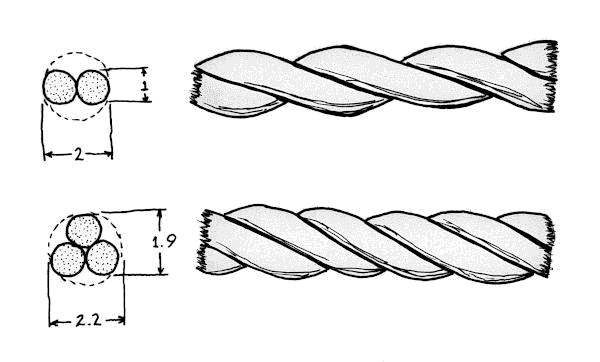
Figure 5.1: Two- and Three-ply Rope Profiles.
| Chapter 4 | Introduction | Chapter 6 |
A three-ply rope is only marginally wider that the widest part of a two-ply rope, but is fifty per cent stronger. Two strands of one inch diameter will fit snugly through a two inch hole. Three strands of one inch diameter will fit snugly through a 2 3/16th inch hole.

Figure 5.1: Two- and Three-ply Rope Profiles.
Figure 5.1, above, shows the relative dimensions of two and three-ply ropes made from the same size strands. The diameter of the smallest circle that contains three strands is only ten percent larger than the circle containing two strands.
You can see the two-ply's profile is more irregular, so it will not run as smoothly through pulleys.
The three-ply rope can be made by folding, worming, or twisting in parallel.

Figure 5.2: Folding a One-ply Cord in Thirds.
In Figure 5.2 above, you take a strand that is a little more than three times the desired length for the finished rope. Once the strand is well twisted, it is wrapped around a handy fixed position one-third of the way from the anchor to the crank. This can be a post in the ground, a hook on the wall, or an assistant's finger. Then loop around the fixed anchor. Lastly, bring the crank back to the one-third temporary anchor. Transfer the loop back to the crank's hook. Finally turn the crank in the opposite direction, to form the rope. If the fibers are stiff enough, and you have sufficient twist in the original strand, the rope will actually twist itself.
Worming was a technique used by Viking ropemakers.[105] [777] [1045]
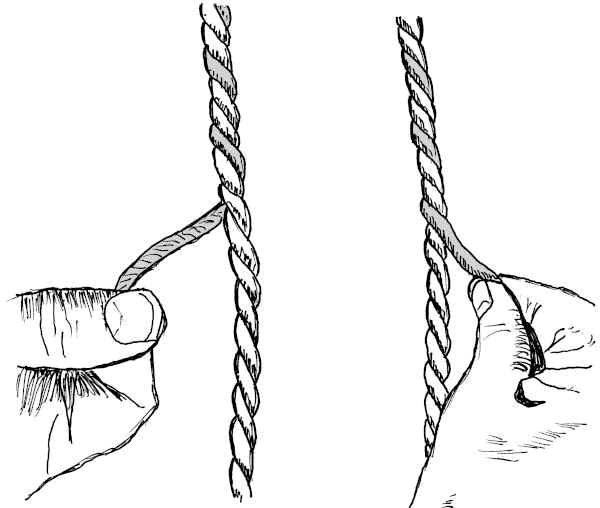
Figure 5.3: Worming a Three-ply Cord.
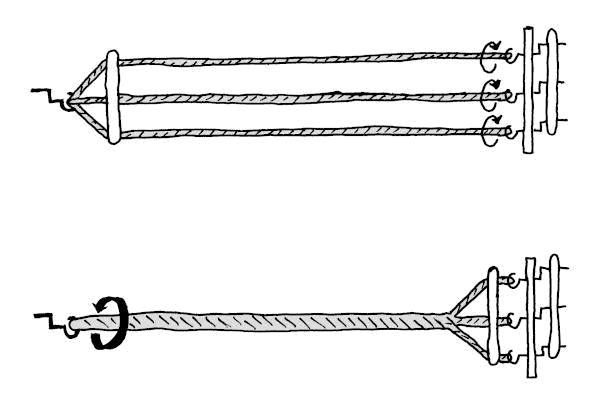
Figure 5.4: Twisting Three Cords in Parallel.
This is the general set-up at a ropewalk.[015] [017] [018] [413] There is a single crank at one end with all three strands attached. This end is traditionally called the "traveler" as it can move to accommodate the cords getting shorter as they twist. For small ropes, this can be just a hand-held crank, like the ones used for twisting yarns, above. For the largest ropes at the ropewalk, the traveler is a heavy wooden sled, often weighted down with rocks or barrels of tar. Yet the shortening of the rope caused by the twisting will pull this sled along the length of the ropewalk. It travels.
 |
 |
| Figure 5.5: Hand-held "Traveler". | "Traveler" from Diderot and d'Alembert.[972] |
The strands then pass through a "top", Figure 5.6, which keeps them separated during the initial twisting operation.
 |
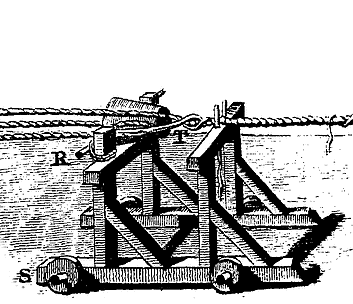 |
| Figure 5.6: Different Shaped "Tops". | "Top" from Diderot and d'Alembert.[972] |
The strands go to the other end of the walk where they are hooked to three individual cranks. This is called the "jack". There is often a linkage on the cranks so they all turn at the same time, and the same speed. The three cranks are turned until the right amount of twist is in the strands. Then the big crank on the traveler is turned in the opposite direction, while the top is moved towards the three cranks, allowing the rope to form, or "close", in a controlled manner. A hand-held twister can be used for smaller cords. For larger ropes, one man would be turning each individual crank.
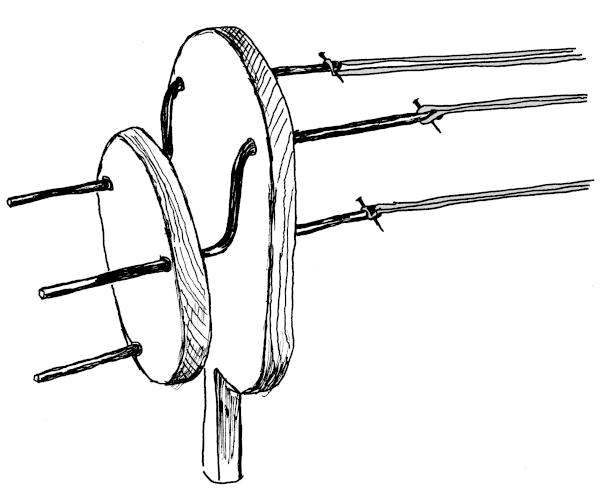 |
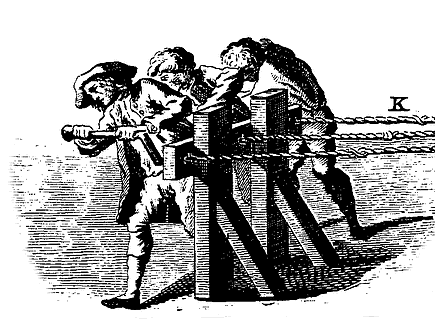 |
| Figure 5.7: Hand-held Three Crank "Jack". | Three Man "Jack" from Diderot and d'Alembert.[972] |
As the illustrations show, the size of the tools, and the amount of effort required for twisting, vary with the size of rope you're making.
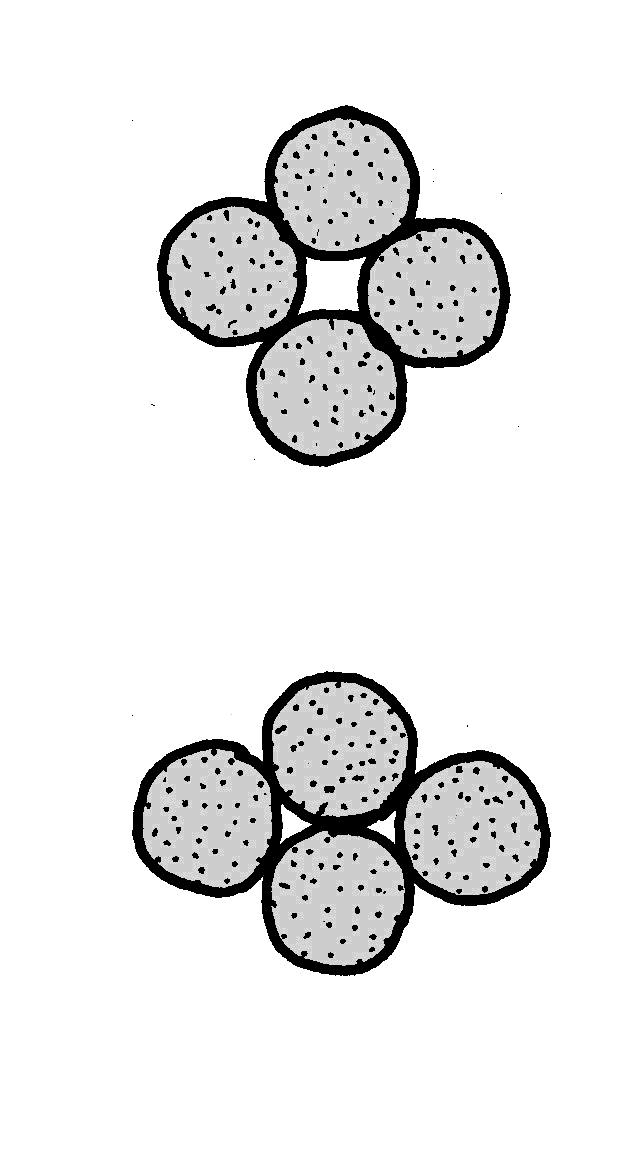
Figure 5.8: Four-ply Cross Section.
A square is not as strong a shape as a triangle. The square can be squashed into a parallelogram, as in Figure 5.8, above. This shifting of the strands, relative to each other, causes wear, and shortens the life of the rope. A solution is to lay a slightly smaller diameter core, or heart, in the center of the rope.
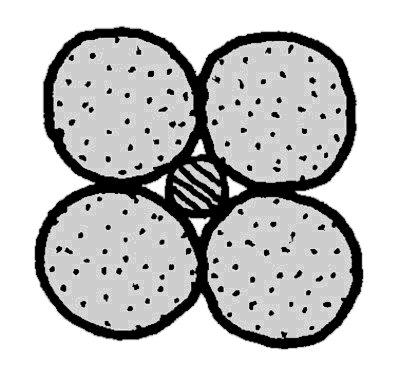
Figure 5.9: Four-ply Rope with Core.
This is generally called "shroud laid" rope. Since the four strands wind around the core, the core has to be shorter than the outer strands. And because the core has a smaller diameter than the outer strands, it requires a slightly different run on the rope walk. The merits of shroud laid rope were still in dispute with Navy officials into the 1800s. In Colonial times, if you were making heavy rope, it would be three-ply.
| Chapter 4 | Introduction | Chapter 6 |
| Colophon | Contacts |